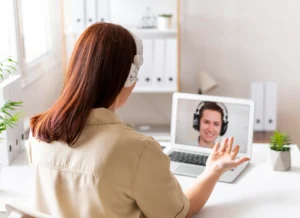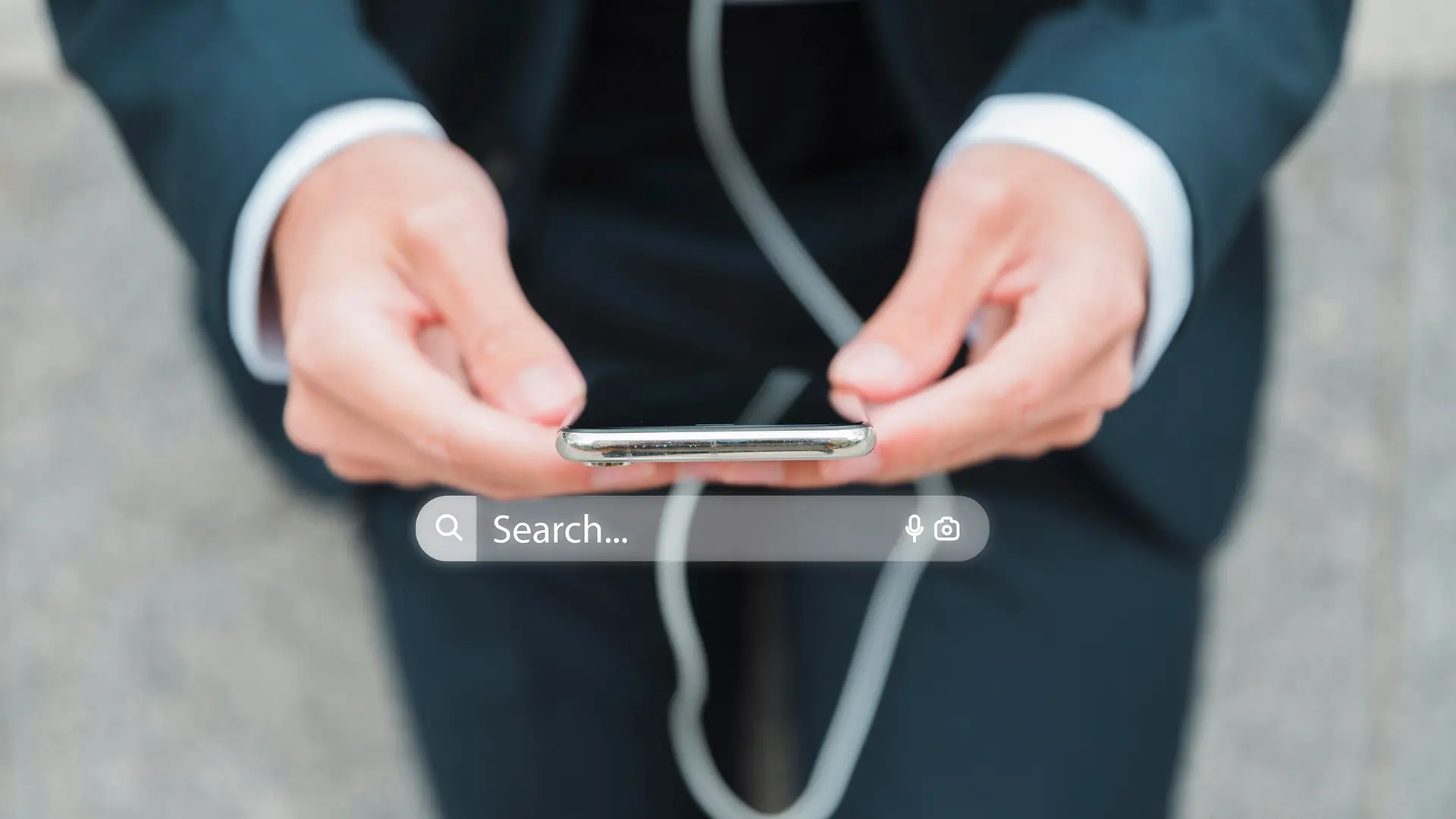Video remote interpreting (VRI) has established itself as a key tool in the healthcare sector, where multilingual care is a fundamental patient right. This system allows patients and interpreters to connect through secure video calls, overcoming language barriers without requiring the interpreter to be physically present.
In an environment where patient experience, communication clarity, and diagnostic accuracy are essential, video remote interpreting is increasingly important. In this article, we explain exactly what video remote interpretation is, how it compares to other types of medical interpretation, and the advantages and disadvantages it presents in clinical settings.
What is Video Remote Interpreting (VRI)? VRI Service vs. Other Interpretation Services (OPI/VIS)
Video remote interpreting is a service that enables fluent communication between healthcare professionals and patients who do not share a common language. It does so by connecting them in real time with qualified interpreters through video calls. This system combines the immediacy and flexibility of remote interpretation with the communicative richness of visual contact, making it an especially valuable tool in clinical environments.
Unlike over-the-phone interpreting (OPI), which relies solely on auditory communication, VRI allows the patient and the interpreter to see each other. This visual component helps convey gestures, facial expressions, and body language—all crucial in medical contexts to build trust, empathy, and understanding, particularly when explaining symptoms, diagnoses, or treatment options.
Video remote interpreting also differs from in-person interpretation because it does not require the interpreter to be physically present in the consultation room. This provides a significant operational advantage: there is no need to coordinate travel, reserve consultation rooms, or depend on the interpreter’s geographic location. This reduces waiting times and logistical costs without compromising communication quality.
| Video remote interpreting | Over-the-phone interpreting | In-person interpreting | |
| Visual contact | Yes | No | Yes |
| Access speed | High (on-demand) | High (on-demand) | Low (requires planning) |
| Logistical cost | Low | Very low | High |
| Communication quality | High | Medium (no visual cues) | High |
| Recommended situations | Clinical consultations, scheduled appointments | Emergencies, immediate availability | Sensitive or psychological evaluations |
Why is VRI an asset in healthcare? What you should keep in mind
In clinics and medical centers where time, efficiency, and quality are critical, video remote interpretation healthcare services offer very specific benefits. They enable rapid response, maintain high standards of care, and provide a positive experience for international patients or those with special language needs.
- Immediate access to professional interpreters: VRI allows you to connect within minutes to interpreters specialized in medical fields, without needing to coordinate schedules or travel arrangements.
- Enhanced patient experience: Patients feel understood and supported in their own language, reducing anxiety, improving communication with healthcare professionals, and strengthening confidence in the treatment process.
- Lower cost than in-person interpretation: Eliminating travel, waiting times, and associated logistics makes VRI more cost-effective for healthcare providers while maintaining high-quality communication.
- Coverage in multiple languages without travel: Video remote interpretation makes it possible to access interpreters in less common languages, regardless of the location of the patient or clinic.
- Adaptability across medical specialties: VRI can be used in general consultations as well as specialized areas such as gynecology, cardiology, psychiatry, and even follow-up visits or patient education sessions.
Tips for effective implementation
For video remote interpreting to work smoothly in a clinical environment, having the right technology is necessary but not sufficient. Following best practices is essential to ensure clear, accurate, and professional communication. Key tips for successfully implementing VRI in your healthcare center include:
- Choose the right interpreter: Prioritize medical experience, proper certifications, and language proficiency.
- Plan ahead when possible: While VRI is available on-demand, scheduling in advance can guarantee quality and availability.
- Provide a brief clinical briefing: The more context the interpreter receives, the more precise the communication will be.
- Ensure quality standards and certifications: Make sure your interpreting provider meets medical and linguistic regulations.
- Select the right interpretation mode for the consultation: For sensitive diagnoses, VRI is often preferable to telephone interpreting; for sudden emergencies, phone interpreting may provide faster access.
Pros and cons of video remote translation in healthcare
Like any service, video remote interpreting has its limitations, particularly if it is not managed professionally or used in inappropriate contexts. Below are the main advantages and disadvantages of video remote interpreting in clinical settings.
Advantages of video remote interpreting:
- Quick connection to interpreters within minutes, even outside standard working hours.
- Better communication quality than over-the-phone interpreting, thanks to visual contact.
- Greater flexibility to accommodate different specialties and types of consultations.
- Ideal for clinics treating international patients, expatriates, or multilingual communities.
- Requires minimal equipment: a device with a camera and secure internet connection is sufficient.
Limitations of video remote interpreting:
- Technological dependence: Requires a stable internet connection, high-quality camera, and clear audio.
- Not a complete substitute for in-person interpretation: Particularly in highly sensitive clinical cases, such as psychiatry, oncology, or complex diagnostics.
- Privacy considerations: Use only secure platforms compliant with regulations such as HIPAA or GDPR.
- Initial learning curve: Both healthcare staff and patients may need time to become familiar with the process.
In an increasingly connected and multilingual world, video remote interpreting provides an efficient, professional, and reliable solution for healthcare providers looking to deliver high-quality care without language barriers.
Choosing the right type of interpretation and working with qualified professionals is critical for ensuring a smooth consultation and a positive patient experience. If you are considering introducing video remote interpreting services in your healthcare facility, Linguaserve can help design a tailored medical interpretation service with qualified interpreters and secure technology systems.



